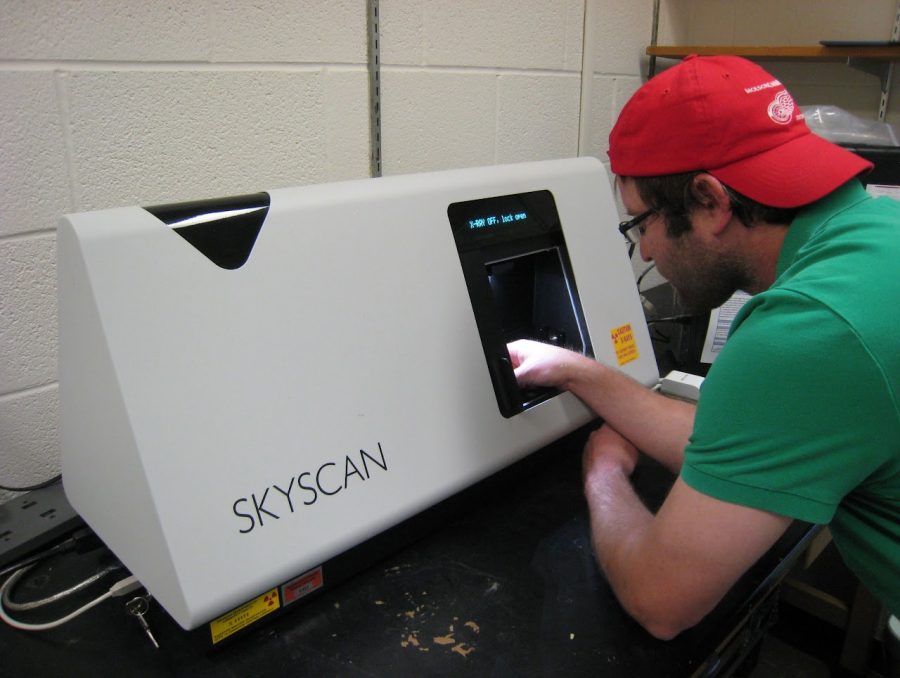Yang Xia’s labs are doing a lot for the world of physics
A member of Xia’s lab working in µCT lab.
Physics labs are a big part of Oakland University’s research departments. Yang Xia, a distinguished Professor of Physics, has been working hard within the walls of Hannah Hall to provide research about microscopic imaging.
Xia has many labs in the works at OU — he sees himself as a hands-on experimentalist.
“I like getting my hands dirty and doing things,” Xia said. “And by doing things the new way, hopefully we discover some interesting things along the way. Which will be useful and beneficial to biology and medicine.”
All the instruments Xia is using for his labs are physics based. The five main micro-imagine systems he uses through his labs have spatial resolutions, ranging from a fraction of µm to tens of µm.
“It’s the new knowledge that can help us understand a disease better,” Xia said. “Hopefully either diagnostic techniques which can detect a disease early or help the design of the therapeutic exercise which slows down the disease, or even stops the progression of the disease.”
Starting with Xia’s µMRI lab — this provides an interface with clinical MRI machines. They follow the same physics principles and use a strong magnetic field that interacts with protons in the body. The µMRI lab is to make images of tissue specimens.
Moving forward with his polarized light microscope (PLM) lab, which is two digital imaging systems. The first system is a thermoelectrically cooled Sensys camera. This part of the machine can help analyze binary images. The second system is a commercial Abrio system. This can help comprehend data from a CRI.
Xia has also worked with the same principles of clinical CTs in his µCT lab. This works similarly to a CT and has the same design features. IT is used in the lab to develop more about the interface between cartilage and bone.
The students working on these labs with Xia are physics majors and have a lot of background knowledge in biology and medicine. Along with Xia, they work on papers and attend meetings to further people’s knowledge about the labs they are working on.
Some of the other things Xia has going on is his lab about Mech testing, testing very small changes in mechanical properties.
The gadgets in Xia’s labs contain many different kinds of mechanical and electrical parts. He also has access to outside facilities to help his labs run smoothly.
Xia and his students have also been working on a fourier-transform infrared imaging (FTIRI) lab. This creates the opportunity for chemical mapping capability to add into their research. There have been 16 journal papers published on his studies of the cartilage and its degradation by using this machine.
“We tell everyone about our discoveries and what we see has been used and incorporated into clinical procedures in hospitals,” Xia said.
For more information on Xia and the work he has done check out his website at https://sites.google.com/oakland.edu/xia/home/xialabfacilities?authuser=0 (all the information on his labs, as well as presentations and research).






